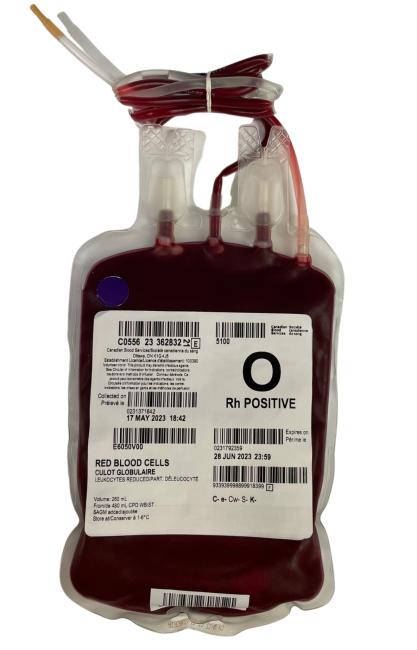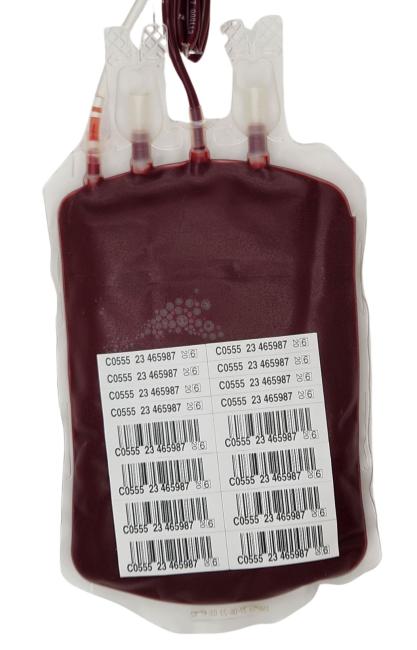Red blood cells
Red blood cell (RBC) units consist of RBCs suspended in a small amount of residual plasma and additive solution. There is normal variation in the shade of red seen in RBC units that may reflect a difference in the hematocrit of the donor (i.e., a higher hematocrit will result in a darker red).
There are several conditions or characteristics associated with a change in appearance of the RBC unit and associated segments. Segments should not be used to determine whether to discard or return a unit as they may not be reflective of the unit content. Post-production manufacturing such as deglycerolization, washing or irradiation does not significantly change the appearance of RBC units, but will be indicated on the label or as an additional indicator on the unit. Whether or not a blood component is suitable for transfusion is determined by local hospital policy and procedures.

